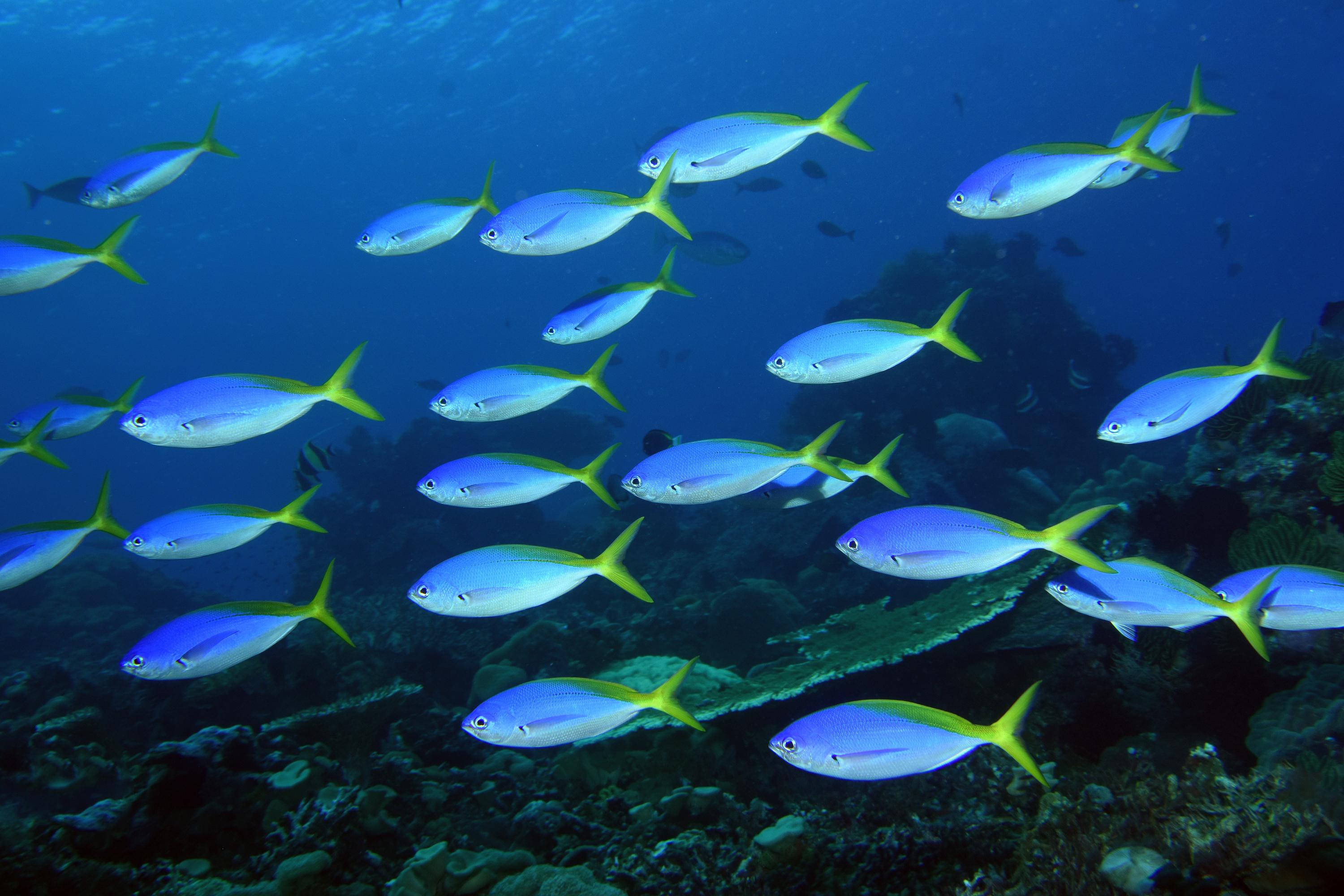Editor’s note: With 3 billion people relying on seafood as their chief source of protein, farmed seafood — known as “aquaculture” — will be crucial to feeding a growing population without further depleting our oceans. Although it supplies nearly half of all seafood consumed globally, aquaculture gets a bad rap. In this piece, we puncture some of the myths about farmed seafood.
Myth #1: Only a few fish species come from aquaculture
For many, aquaculture is synonymous with shrimp, catfish or salmon. While 70 percent of salmon on the market is farmed, salmon makes up less than 5 percent of all aquaculture production. Farmed seafood also includes mussels, oysters, lobsters and more than 225 species of fish, with freshwater fish and mollusks topping the production list.
Aquaculture has already surpassed global beef production, and demand is likely to keep growing, said Ben Halpern, lead scientist for the Ocean Health Index, a tool developed by CI that tracks ocean health.
“There’s a limit to how much wild fish we can sustainably catch indefinitely, whereas with aquaculture, we can produce more fish,” Halpern said. “We can’t meet increasing demand if we pit caught and farmed fish against each other. That’s not a productive debate. We need to focus on how we can do aquaculture as sustainably as possible.”
Myth #2: Feeding fish to grow fish is wasteful
Certain farmed species including salmon and shrimp are given fishmeal and fish protein, fueling criticism that it takes an undue amount of resources to feed the fish on our dinner plates. While amounts and types of feed vary, farmed fish is far more efficient to produce than other common meat sources.
“If you do a comparison across food systems, cows require a nearly 7:1 ratio, or seven pounds of feed to get one pound of body mass,” Halpern said. “Pigs are nearly 3:1, chickens are nearly 2:1 — whereas fish are getting close to 1:1. So in terms of converting food into something that we then eat, fish are some of the most efficient animal protein sources out there.”
CI is working with fish farmers to transition to more sustainable feed sources. Instead of using fishmeal and fish oil, farmers can feed certain fish plant-based diets, including locally sourced agricultural byproducts such as oil cakes and rice bran.
Myth #3: Freshwater use for aquaculture is high
When you think of aquaculture, freshwater ponds might come to mind, yet nearly half of aquaculture relies on salt water. In the United States, only 3 percent of freshwater use supports aquaculture, and even this amount is minuscule compared with the amount of water required to support other sources of meat. Of the fresh water used by people worldwide, a whopping 70 percent goes toward agriculture — leaving 30 percent for drinking, cooking and industry, according to Halpern. Nearly one-third of this agricultural water is used for animal production, mainly to grow feed for livestock such as cows and pigs.
“When you’re doing marine aquaculture, you need essentially zero fresh water, at least for the fish — though you need some water for feed grown to feed the fish. Regardless, there’s a huge savings in water,” Halpern said.
Myth #4: Aquaculture is inevitably bad for the environment
In terms of greenhouse gas emissions, farmed seafood has a much smaller footprint than beef, though on average it is slightly higher than chicken and pork.
Aquaculture also contributes less nitrogen and phosphorus pollution than beef or pork; this pollution causes algae to grow in waterways, suffocating fish and other aquatic life. Farming species like clams and scallops can help improve water quality by acting as water filters and absorbing these nutrients.
CI is also working with aquaculture farmers to place facilities away from sensitive areas such as coastal mangroves, which store large amounts of carbon and protect coastlines from erosion and storm surges.
Myth #5: Farmed seafood is only grown on land and close to shore
New methods are expanding offshore aquaculture, where fish are grown in open ocean waters as deep as 200 meters (over 650 feet). Deeper waters and faster currents lessen pollution and disease, increase production, and reduce pressures on terrestrial and coastal habitats.
“Offshore farming is still relatively new, and it’s where we have the biggest opportunity to grow and steer aquaculture toward sustainability,” Halpern said. “There’s so much potential and flexibility to produce a lot of food, so let’s try to do aquaculture as effectively as we can.”
In fact, the world needs very little of the ocean to produce seafood in a sustainable way: Using just 1 percent of area suitable for deep-water aquaculture can produce as much fish as is currently gathered from all wild-caught fish, according to Halpern. New research explores the “vast, untapped potential” of deep-water aquaculture to meet global seafood needs — sustainably.
“We have turned 40 percent of our land around the planet into agriculture and livestock production, which is a huge amount of habitat loss for creating food for ourselves,” Halpern said. “If we could produce food more efficiently, we could save or restore a lot of landscapes. We really need to think about the merits of beef, pork and chicken versus fish from a land conservation perspective, not just an ocean conservation perspective.”
Leah Duran is a staff writer for CI.
Further reading
